Considering a mostly meshed distribution network (with some radial spurs) connecting zone substations (loads) to grid exit points (GXPs or sources).
I am attempting to find the proportion of the network each loads utilises i.e. what proportion of the total power flow in a particular constituent part of the network does each load contribute?
I would also like to then do a similar analysis on embedded generation, for example, a small hydro or wind plant connected to one of the zone substations, how much of the total capacity in the constituent parts of the network would this generator utilise?
There are three main constituent parts that make up a network, these are sources (both embedded generation and GXP), zone substations (and their loads), and lines. There are also shared assets, for instance, ripple injection plants, backup lines (lines normally out of service), but these can be ignored.
Before embedded generation needed to be considered this problem was normally solved by a "superposition", where all but one substation/load was turned off and the power flow in each branch/part of the network was measured using a load flow program. This was repeated for every substation on the network (sharing the same GXP) and the load flow results for every branch were then aggregated together to give a total. The proportion asset utilisation was worked out by then dividing the load flow results for a particular zone substation (load) by the aggregated total for that particular constituent part of the network.
This method does however have a problem in that there is squared relationship between current and power losses, so for large loads the aggregated sum is less than the results recorded in the loadflow under normal operating conditions (it seems to work okay for the smaller loads). One of the problems with extending this "superposition" concept to multiple sources is that depending on the load which is turned on a small embedded source may or may not have enough capacity to fully supply the zone substation (load) in question.
